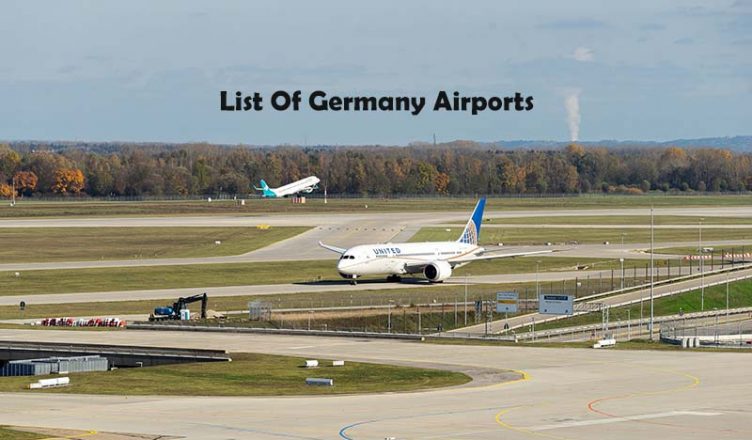Germany is located in the center of Europe and has a population of nearly 84 million, sharing its borders with nine other countries. Germany attracts tourists from all over the globe. A Germany tourist visa allows travelers to explore and travel across this beautiful country. If you are visiting Germany for holiday or business, you have the option of arriving at different airports in the country. Here you will find a list of airports present in Germany.
Airports in Germany
In addition to several airports, commercial airfields and airstrips, Germany is home to cargo and commercial passenger airports. The international airports in Germany come in an array of sizes. Major cities like Frankfurt and Munich are massive hubs, which welcome over 10 million travelers annually. These airports are big enough to accommodate up to 125 different airlines, serving numerous destinations daily with hundreds of takeoffs and landings. There are also several medium-sized airports that provide service from well-known carriers like Lufthansa as well as budget and charter carriers including German Wings, RyanAir, TUIfly, Air Berlin, and Condor. They frequently provide a sizable number of flights to cities all around Germany and Europe. Low-cost airlines and charter businesses account for a large portion of the traffic at minor airports. The charter carriers are usually dedicated to holiday destinations in warm climates. From the international airport hubs of Munich and Frankfurt to the New Berlin airport, here is a list of airports in Germany.
Frankfurt Airport (FRA)
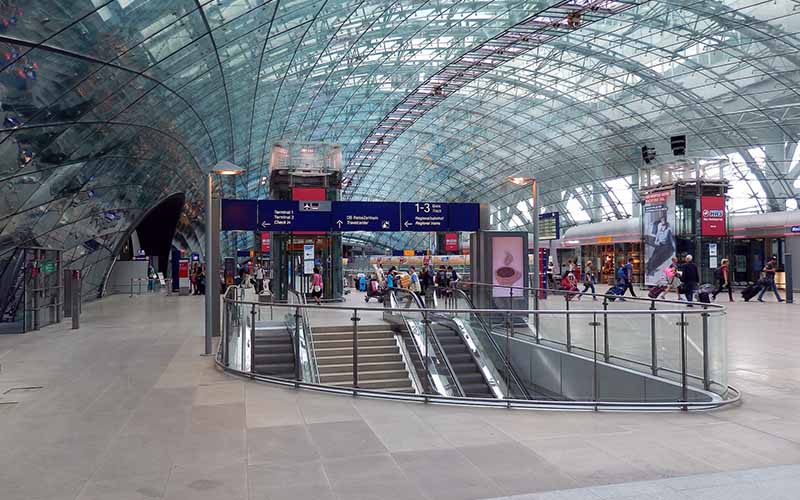
Frankfurt serves as the nation’s financial hub and is located in Germany. Frankfurt is in the southwest, so taking a flight there will put you near Luxembourg, the French border, and Germany’s wine regions. This is the busiest airport in Germany and more than 58 million travelers passed through Frankfurt Airport in 2013. There are flight connections from Frankfurt to close to 300 airports in more than a hundred nations.
Frankfurt is the eighth busiest airport in terms of total cargo tonnage and the 12th busiest airport overall among the world’s top 15 airports. The airport is second for freight and fourth for passengers in Europe. At Frankfurt Airport, there are typically 2200 takeoffs and landings per day. Passengers use Frankfurt Airport as a hub for transfers to other German cities or international destinations.
Munich Airport (MUC)
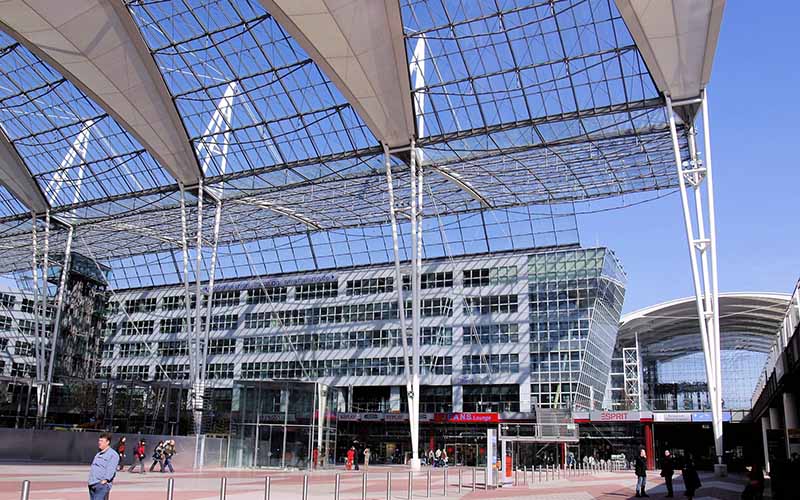
Munich is in the capital of Bavaria in the southeast of the country. Munich airport is the second busiest of Germany Airports. Tourists love it for its Oktoberfest celebration, historic buildings, and architecture. It bears Franz Josef Strauss’ name, a former governor of Bavaria who was instrumental in establishing the region’s aviation sector.
Dusseldorf Airport (DUS)
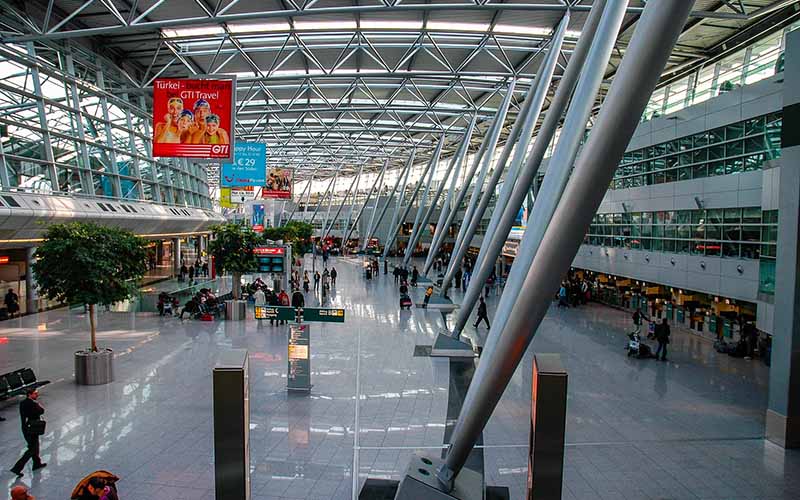
Dusseldorf airport is the third busiest airport in Germany. 21.2 million passengers were counted in 2013. Dusseldorf has a luxury railway station (Dusseldorf Flughafen) and a metro station (Dusseldorf Flughafen Terminal/ S-Bahnof). Dusseldorf Airport is one of Europe’s top 25 busiest airports, with 25.5 million passengers in 2019. It has a relative terminal, replacing the one that was destroyed by a disaster in 1996. Like Frankfurt, Dusseldorf has two railway stations, one for long-distance and intercity trains and one for local trains. The long-distance station is linked to the terminals by a “Skytrain” station.
Berlin Airport (BER)
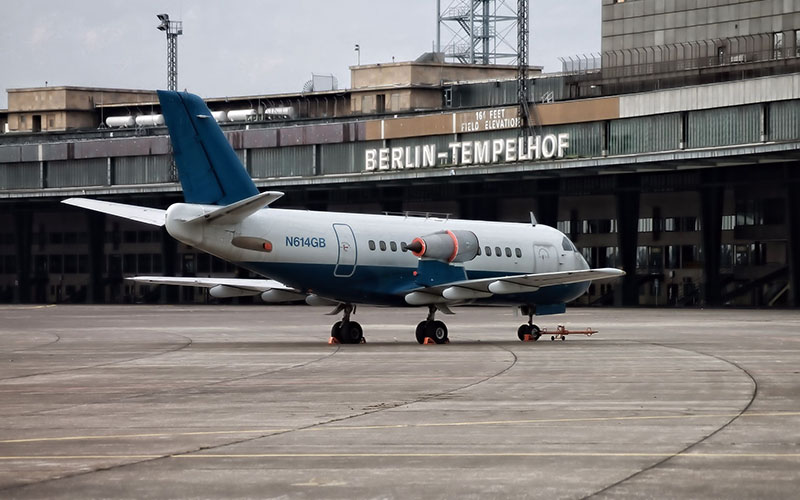
During the Cold War, 4 airports served Berlin, one for the British, one for the French, one for the Russians, and one for the Americans. Glasgow was the military airport for the British, while the Americans ran Tempelhof, the French ran Tegel, and the Russians had Schonefeld. With Tegel and Schonefeld serving as the only facilities managing commercial traffic to Berlin, the operations at Tempelhof were closed in 2008. Although Tegel and Schonefeld are still in use, they cannot accommodate the volume of travelers flying into and out of Berlin. They are conveniently situated and well-served by Germany’s first-rate transportation network. For those who enjoy a historic vibe and a vibrant art scene, Berlin is a popular place to visit in Germany. You’ll be surprised to discover how many cool and awesome things to do in Berlin are there for you to explore.
Hamburg Airport (HAM)
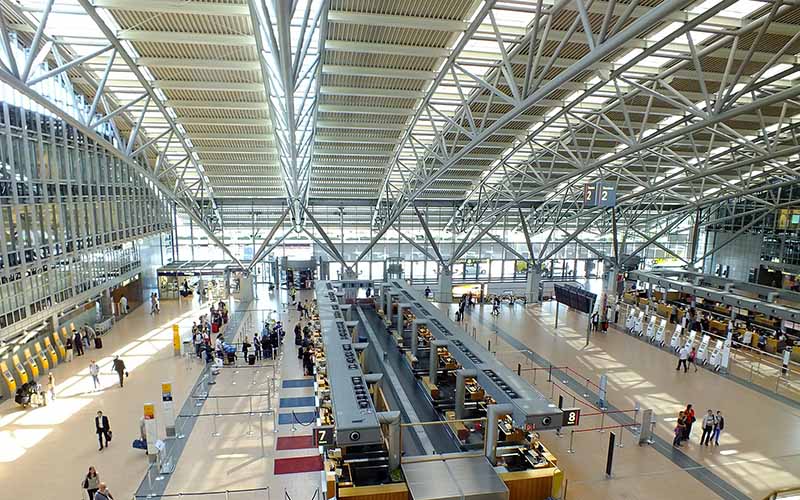
The Fuhlsbuettel Airport in Hamburg is also becoming modern. In 2005, it got a state-of-the-art terminal and has an urban subway (S-Bahn) link up, a shopping plaza, and a hotel. The Hamburg Airport, located in the north of the country, started operations in 1911 and is the oldest airport in Germany. In 2016, it was visited by 16.2 million passengers, which is the fifth-largest airport in the country. Hamburg Airport comes third in Germany and even beats Dusseldorf Airport. Because of the superior capabilities of new aircraft and the number of tragic accidents, the use of airships had significantly declined by 1940. Hamburg is the best centrally located airport to use for trips to Germany’s northern coast and Denmark.
Cologne / Bonn Airport (CGN)
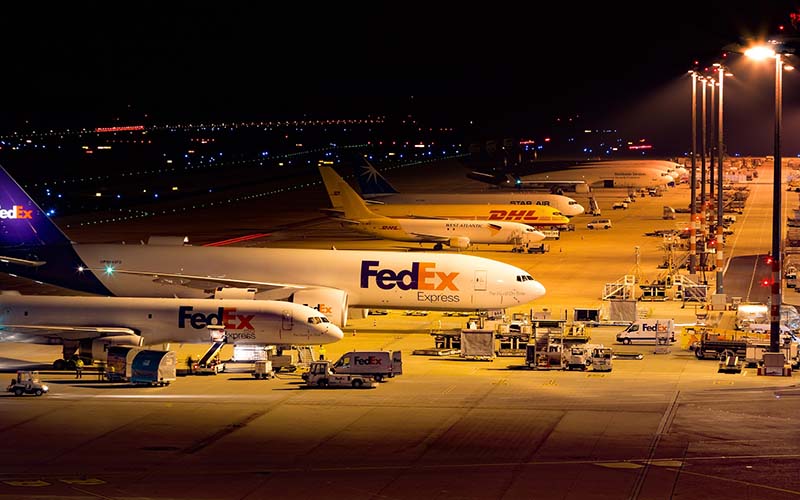
The Konrad Adenauer Airport, located between Cologne and Bonn, serves as a hub for German wings and other low-cost airlines. The Cologne Bonn airport is 15 kilometers southeast of Cologne and 16 kilometers from Bonn. The High-speed Intercity Line connects it to Frankfurt Airport in less than an hour. This has created numerous opportunities for connections, which should help the airport’s growth and the Frankfurt runways.
Stuttgart (STR)
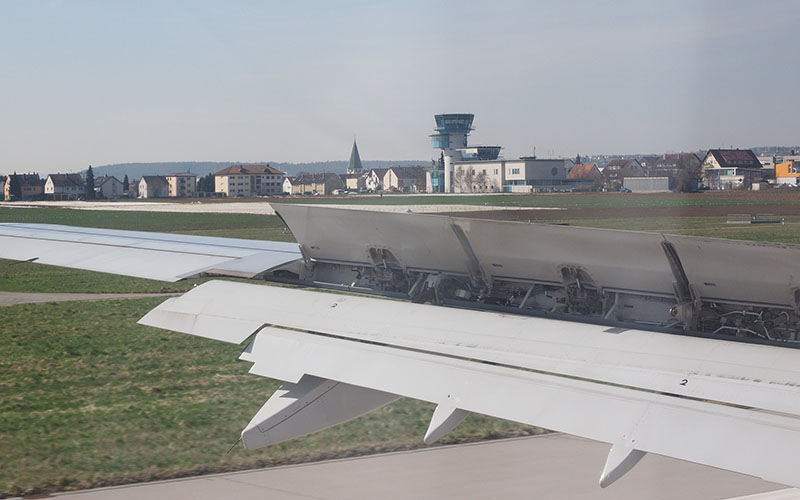
Stuttgart Airport is located on Autobahn 8 just south of Stuttgart. With over 9.5 million passengers, it is Germany’s sixth busiest airport. It is easily accessible by autobahn, high-speed rail, and S-Bahn from the city. The Stuttgart Trade Fair Exhibition Center, located next to the airport, opened in 2007. Four passenger terminals were built in 2004 to replace the ageing terminal. They provide all of the amenities of a modern airport. On September 11, Germany implemented flight safety rules similar to those in effect in the United States, including the prohibition of knives, scissors, and similar-in-hand baggage. Restaurants, duty-free shops, car rental agencies, bars, conference centers, post offices, banks and medical facilities are available at many German airports. And sometimes they go above and beyond.
There is a program linking air travel to rail travel in major hub cities, running successfully. High-speed trains run directly to the airports of Dusseldorf, Frankfurt, Stuttgart, and Cologne Bonn. Getting a Schengen visa is the most convenient way to obtain an entry to Germany. When planning a trip to Germany, learn how long you can stay in Germany with a Schengen visa and how to apply for one so that you can plan your trip smoothly.
